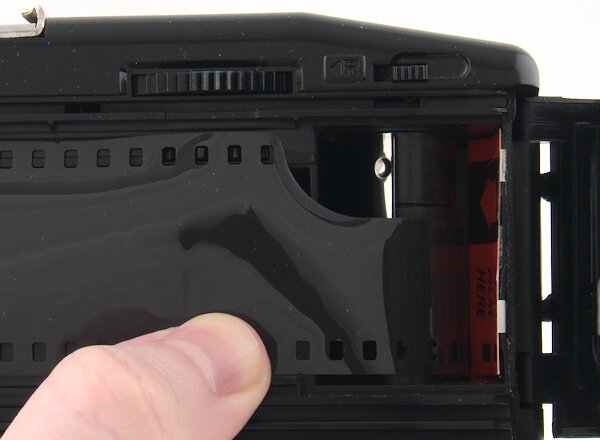How to Load Film into the Nishika N9000
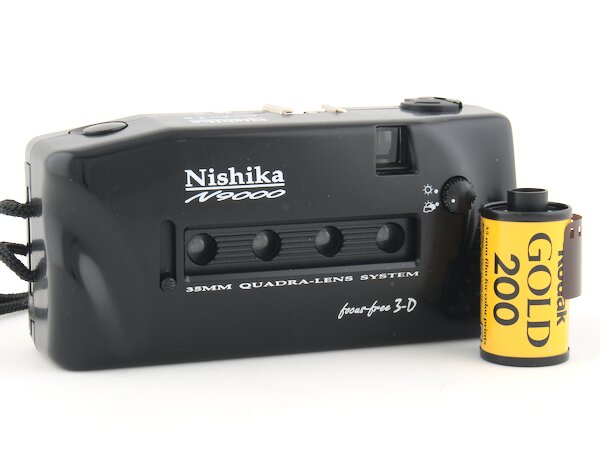
This page will show you how to make sure your Nishika N9000 is functioning and how to load film into your camera. If this is your first time using your Nishika N9000, make sure to read through the before you load film section.
For more information on the camera, you can see the Nishika N9000 camera page.
Before You Load Film
Batteries Not Required
The Nishika N9000 has a mechanical shutter. No batteries are required to use the camera.
Make Sure There is No Film Loaded in the Camera
If there is any film left in the camera, it will be ruined if it is exposed to light. The Nishika N9000 has a film window in the back door which will allow you to see if a 35mm film canister is loaded into the camera.
If there is film in the camera, follow the steps on how to rewind and remove film from the Nishika N9000.
Make Sure the Nishika N9000 Functions Correctly
If your Nishika N9000 has not been used in a long time or if it is your first time using the camera, check to make sure the shutter is functioning correctly before loading 35mm film.
Cock the shutter by turning the thumb wheel film advance. After several turns you will hear a click, which means the shutter is ready to fire.
With the back of the camera still open, point it towards a light source or white wall. Look at the back of the lenses and push the shutter release button. You should see a brief flash of light or white if the shutter is working correctly.
Do Not Load Film in Sunlight
Loading film in direct sunlight or bright light can expose more than just the film outside of the canister through light piping.
Light piping is when light is able to get through the light seal on a 35mm film canister. This often will not completely expose the film, but can cause it to end up with varying degrees of fogging.
Fogging can produce a range of undesirable outcomes such as a loss of contrast, blown out streaks along edges, or a completely exposed frame. The problem should subside as more images are taken.
Film Choices
The Nishika N9000 has a sticker on the inside where it recommends using ISO 200 outdoors and ISO 1600 indoors. A flash is also recommended for cloudy outdoor conditions and indoors.
ISO 1600 film is no longer readily available. The next best option is to use black and white ISO 400 film and push it 2-stops. That means altering the development times by what is recommended by the developer you are using or marking the film as +2 if you send it to a mail-order film lab.
The shutter speed is likely 1/60 of a second with the two apertures being f/11, and f/16. If you are comfortable enough with calculating exposure, you can choose to use any speed of film you want.
You’re going to get the best results by using a light meter and then selecting a film speed that will work best for the conditions you are in. Using a flash that has controllable output is also a good idea.
Keep in mind that film degrades in quality over time. Keep film away from hot temperatures like those found in a car on a sunny day or attic during summer.
For the best results, use a fresh pack of film that is not expired. My recommendations are:
Black Black & White White
Affiliate Advertising Disclosure
Outside the Shot is a participant in the Amazon Services LLC Associates Program, an affiliate advertising program designed to provide a means for sites to earn advertising fees by advertising and linking to Amazon.com.
As an eBay Partner, I may be compensated if you make a purchase. I also participate in affiliate advertising programs with KEH and Adorama. More can be found on the Affiliate Discolsure page.
Color
Step-by-Step How to Load Film
Time needed: 1 minute.
How to load film into the Nishika N9000. For demonstration purposes, I am using a roll of film found in a thrift store camera that has been exposed.
-
Open the film door.
To open the film door on the Nishika N9000, push down on the film release button on the side of the camera.
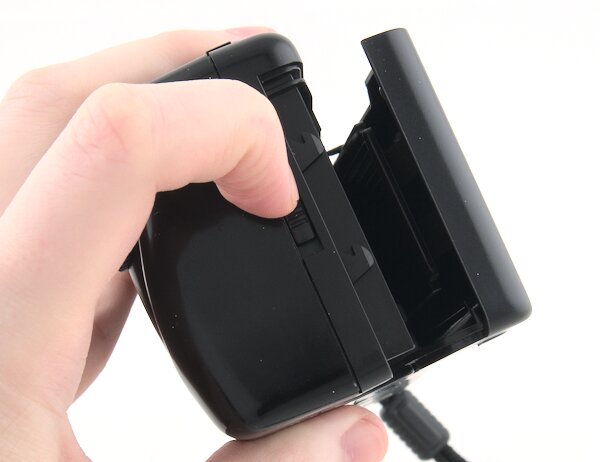
-
Load the roll of film.
The film roll gets loaded into the left side of the camera with the film leader on the bottom. The film leader is the rounded half-width section at the start of every roll of film.
Tilt the 35mm film canister towards the top of the camera when loading to make it easier.
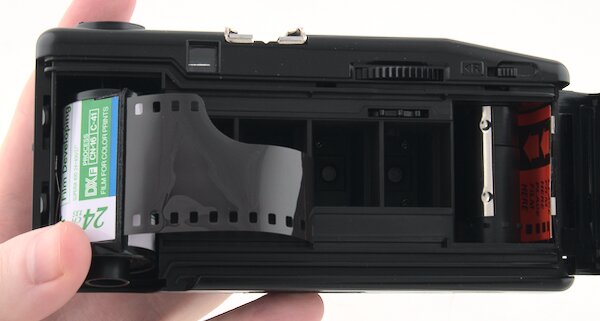
-
Make sure the film rewind knob prongs align with the film canister.
If you have any problems getting the canister into the camera, make sure the rewind knob prongs are aligned correctly with the film canister.
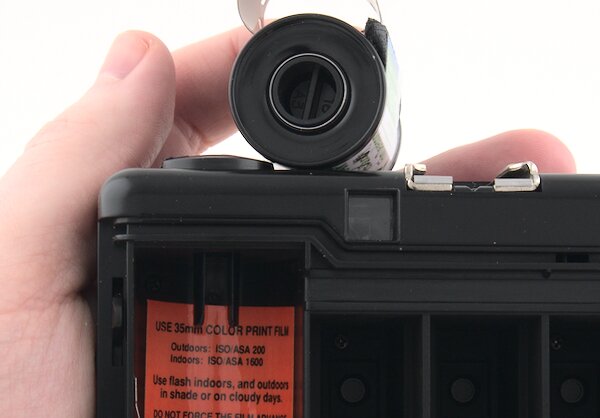
-
Pull the film leader over to the film take-up spool.
With your left hand hold the film canister in place. With your right hand gently pull the film leader over to the take-up spool.
Make sure to pull the film over far enough for the perforations in the film to align with the sprockets located under the film advance wheel. -
Close the film door.
Carefully close the film door. You want to make sure the film stays aligned with the sprockets so it will be advanced correctly.
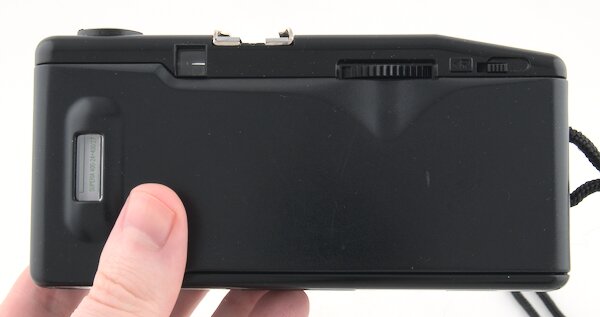
-
Advance the film and fire the shutter.
With your right thumb advance the film and fire the shutter. You want to advance the film counter to the first frame. This process will get rid of the film that was exposed during the loading process.
Pay attention to the film rewind knob, it should rotate counter-clockwise when you use the film advance wheel.
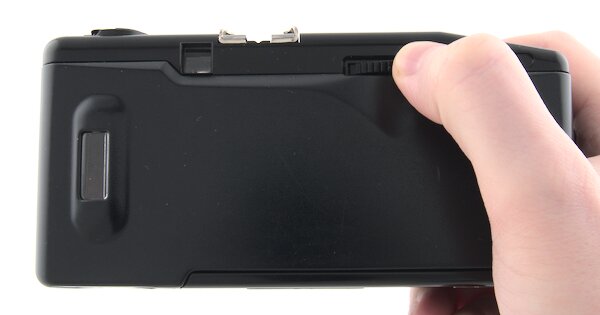
-
Advance and fire the shutter until the frame counter is at 1.
The film needs to be advanced past what was exposed during the loading process. To do this you will need to cock and fire the shutter a couple of times until the film counter is at 1.
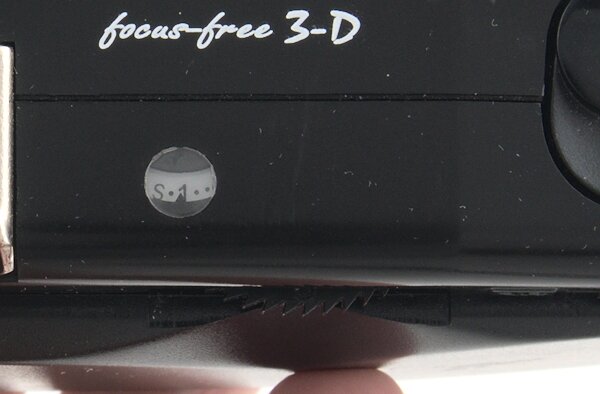
-
You’re ready to take photographs.
Congratulations! Your camera is now loaded with film and ready to shoot.
Once you’ve shot the roll of film, check out this guide that will show you how to unload film from the Nishika N9000.
Where to develop film? You can do it at home, or send it off to a lab to be developed and scanned.
How to Know When a Roll of Film is Done?
The film roll is used up when you are no longer able to turn the thumbwheel film advance. Do not try to force the film to advance. This usually aligns with half the number of exposures the roll contains that can be seen on the film counter.
This is because every shot with the Nishika N9000 uses 2 standard 35mm frames. Most rolls of film will have either 24 or 36 exposures, which will be able to take 12 or 18 exposures with the Nishika N9000 camera.
